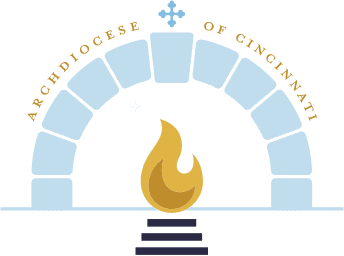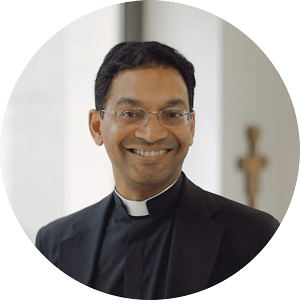In the first two articles of this series, we explored the foundations for the Beacons of Light initiative being undertaken in the Archdiocese of Cincinnati, first describing the Church as the Family of God and then offering characteristics of an evangelizing community. Each “Family of Parishes”, formed through the process, is called to make known the joy of the Gospel. The experience of being a “family of parishes” will be new and will bring challenges and blessings. Here, I would like to describe Beacons of Light as a journey and to show how this journey is rooted in our belief in the Triune God.
Growing up, almost every one of us took a family trip or journey – with hopes for renewal, filled with many joys, along with a few mishaps. As the Archdiocese of Cincinnati journeys into the future, we do so together. The Greek word synodos means “to be on the journey together” as in a caravan or religious pilgrimage (Lk 2:41-44).
We are a “pilgrim Church,” journeying toward the heavenly Jerusalem. Significantly, in Lumen Gentium (LG 9-17), the Dogmatic Constitution on the Church, the Second Vatican Council treated the “People of God” before treating the hierarchy. If a pyramidal view of the Church, with the bishops and priests on top and the laity on the bottom, had dominated previously, now all the baptized, with their distinctive roles, could understand their vocations as a service to the Church.
Synodality is a way of living the faith in a permanent way at every level: in the parish, the family, and at the peripheries. All Church members, not just the clergy or experts, are to be engaged in this way of living. Synodality describes the journeying together in history of the People of God toward the New and Eternal Jerusalem.
Pope Francis calls us to be a synodal church, a church that walks together. He spoke of this in 2015, stating that it is “precisely this path of synodality which God expects of the Church of the third millennium.” (Address during the Ceremony Commemorating the 50th Anniversary of the Institution of the Synod of Bishops, October 17, 2015) Echoing Pope Benedict XVI that synodality was a “constitutive element of the Church,” he described it as “nothing other than the ‘journeying together’ of God’s flock along the paths of history towards the encounter with Christ the Lord.”
A synodal church is one that listens and “which realizes that listening is more than simply hearing.” This involves listening not only to each other, but also to the Spirit to know what “he says to the churches.” (Rev 2:7) Listening affirms each person’s dignity and expresses respect for the voices, legitimate desires, problems and sufferings of the People of God.
The process of listening begins with the People of God, who, in virtue of their baptism, share in the prophetic office of Christ. Priests and bishops, attentive to the voice of the flock, listen to God to act rightly and to give credible witness to the apostolic faith. The process converges to a point of unity in faith, facilitating an encounter with the Lord in Truth.
But what would be the theological foundations for understanding the Church as a Family of God that journeys together? That is, if parishes will be grouped together into “Families of Parishes” in order to discern a future together that best serves evangelization, on what theological basis would this be done?
We begin almost every prayer with the sign of the cross, invoking the Trinity. While next month, we will delve deeper into the theological foundations of Beacons of Light, our belief in the Trinity is a good starting point. There is a clear Trinitarian imprint on the understanding of the Church in the documents of Vatican II, which describes the Church, as “a people made one with the unity of the Father, Son, and Holy Spirit.” (LG, nn. 2-4) One speaks of a “Trinitarian synodality” ad intra, referring to the dynamic relationship of the Persons of the Trinity as a communion of love, and a “Trinitarian synodality” ad extra, in which the persons of the Godhead “journey together” toward all of creation, the Church, and humanity in history. The Father, Son, and Holy Spirit are the model for all forms of synodal living, and, therefore, of a model of living as the Church.
The Scriptures allude to this in the Divine “We” in the story of creation (Gen 1:26), in the visit of the three guests to Abraham (Gen 18:1-5), and in the journey of God toward His people through the covenants of the Old Testament, culminating in the Messiah, who offers salvation to Jews and Gentiles alike. The New Testament, especially the Annunciation (Lk 1:26-38), recounts the Incarnation as a Trinitarian action – a journeying together: the Father sends the Spirit to overshadow the Virgin so that the Eternal Word of the Father might become incarnate. In the Trinity, there is communion and reciprocity among the Persons and an outpouring of love toward humanity.
The Father, Son, and Holy Spirit journey together in harmony. The Triune God journeys together toward all of humanity. The Father, Son, and Holy Spirit journey with us as we discern the way forward for our Archdiocese. In turn, we as “Families of Parishes” must journey together, open to what the Spirit says and guided by the living Word (cf. Ps 119:105).

